SPANISH KO MINIBOTS OVERVIEW
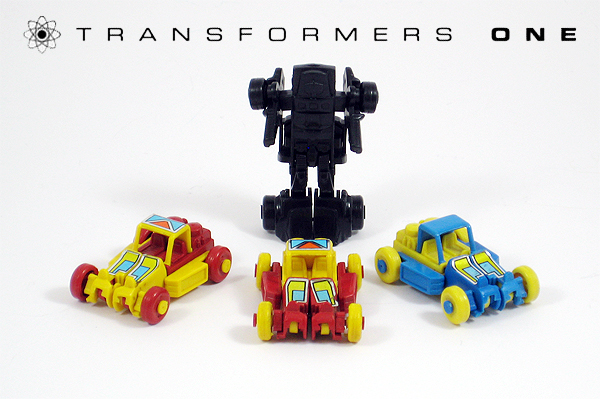
It's been a decade since the origin of the Finnish Diaclone Black Tracks was finally revealed and discovered by the community outside Finland, but even then pictures and stories about it existed for years before, so it wasn't a surprise.
Has there been anything discovered since that was based on established early vintage Generation 1 figures, but completely different? One example that comes to mind is the Japanese Diaclone "Black Sideswipe", that was actually all black, not like Deepcover. Again, another Diaclone example, but quite groundbreaking...although not to anyone who wasn't a G1 car or Diaclone aficionado. And it was still a black Countach, not that new.
This may not be quite as big as those two official releases, but it is good, and it will surprise. For something to make my jaw drop simply because it has gone undiscovered for so long is rare and hugely welcomed. There can't be too many of these moments left in this hobby.
~ Part 1 - The Gumball ~

Seven and a half years ago, in the summer of 2006, I went on holiday with a couple of friends to Mallorca, an island off the coast of Spain. It was to be a 2 week vacation in the sun, as far removed from daily life as possible. That included the people, the day job and even the hobbies. So imagine our surprise when one of the highlights of the holiday ended up being the discovery of a never-before-seen Transformers G1 variant. Sort of...
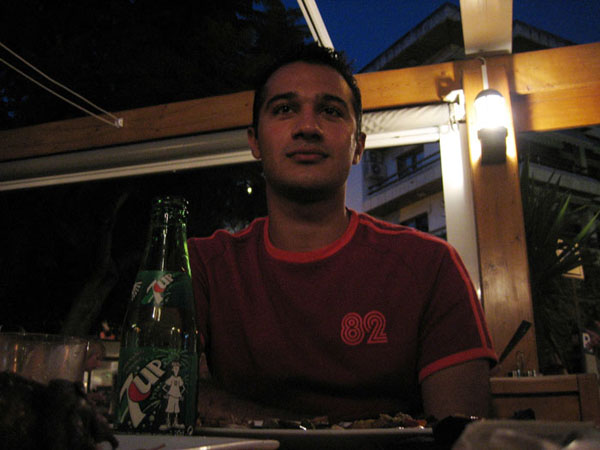
Normally that would be a most unwelcome intrusion on a holiday for the other people accompanying me, but one of those people was Ras (his illness expressed HERE), so it almost became the central theme of the trip, eventually. Obviously Spain is well known for having a lot of gold-boxed Classic Generation 1 Transformers, and more recently it has become known for having had Milton Bradley G1 Transformers too, so the presence of something interesting was not without precedent. But with Mallorca being such a popular British tourist destination, and knowing that Ras had been here many times before, surely we'd have heard something about what was to come?
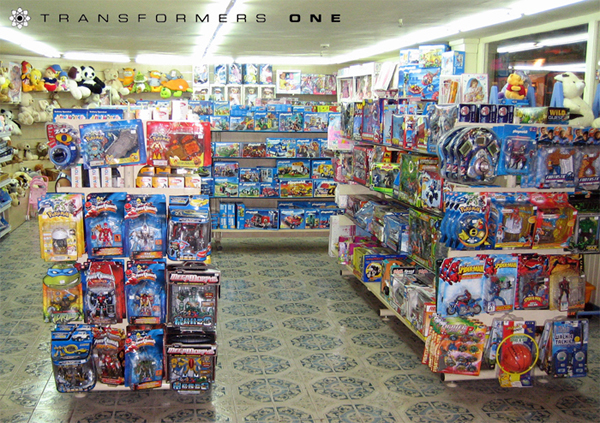
At first, all we found were Binaltech bootlegs from Chinese company A&L called "Metals Transform", very well known in the community and I already had a significant number of them at the time. Toy stores like the above, and even beach-lining souvenir shops had the odd KO Binaltech in their inventory. What Ras spotted in a gumball machine, though, was quite a surprise, and wholly typical of that lucky bugger's now-legendary knack for being in the right place at the right time...
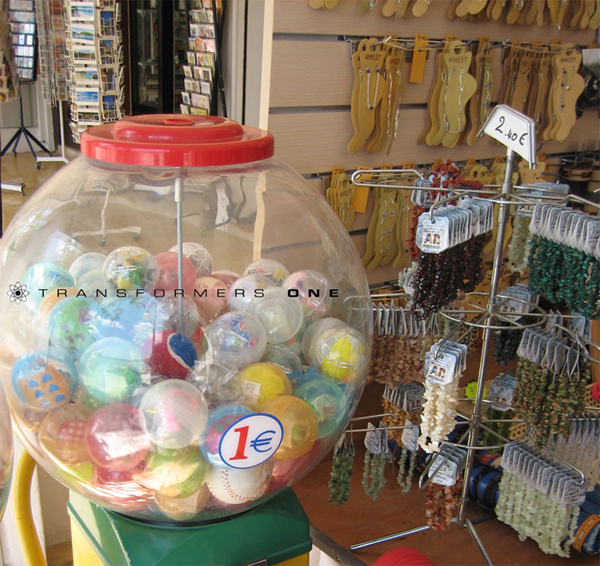
So you already know the source of the big reveal is not an official toy. Takara and Hasbro were never going to licence versions of their Transformers toys to be sold in a cheap European souvenir shop, let alone in a 1 Euro gumball machine intended for tourists to placate bored children.
However, there are crappy bootlegs, and there are bootlegs that collectors will hunt for years because the items in question would bring a genuine sense of expansion to an area of the hobby that never seems to stop growing. This is not yet the reveal, as some of you may know about this through Ras already, but it's a great place to start.
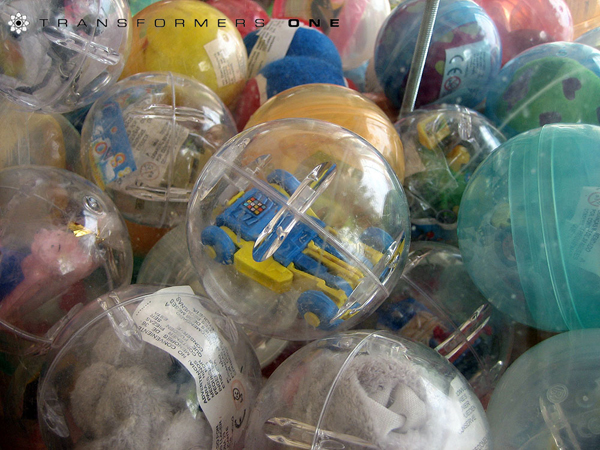
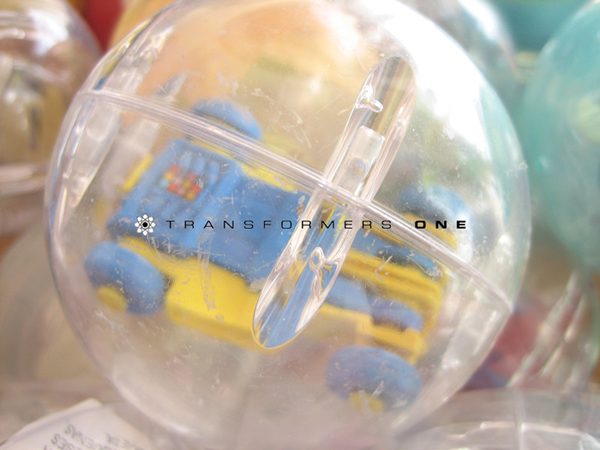
A sunny afternoon, a beach-side souvenir shop, a gumball machine and a bootleg yellow and blue Transformers G1 minibot Beachcomber. Words cannot express the surprise we all felt (except Matt, a non-collector, this must have been his worst nightmare) at finding something so topical - as it was a period of much variant discovery - in the most unlikely of places. But how to get at it?
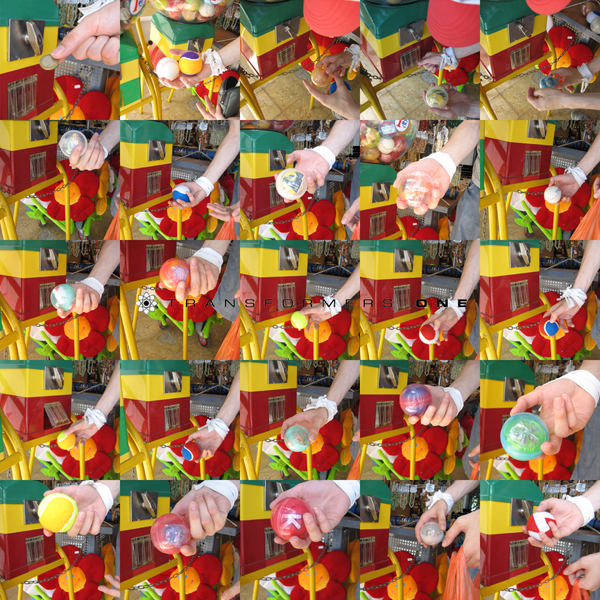
The answer was simple, Ras would pile as many 1 Euro coins into the gumball machine as it took to release the yellow and blue Beachcomber KO from its captivity. Something about the whole experience seemed like it was worth documenting, so before he started emptying his pockets into the incredibly reluctant machine, we decided to document every single attempt he made to free Beachcomber. So, 25+ Euros and a million tennis balls later...
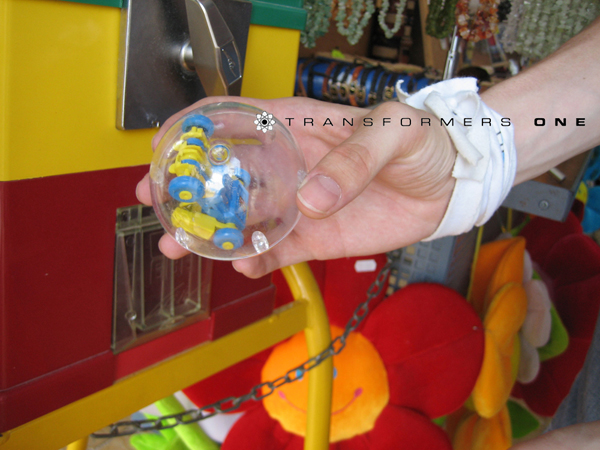
With the yellow and blue Beachcomber KO finally in hand, the questions could begin. Was it G1-sized? Yes, perfectly, not in any way shape or form under or over-sized. Was it a kit? No, it came pre-assembled and in this case, in a sealed gumball with no paperwork and unique stickers already applied. Any copyrights? Of course not. Quality? Nowhere near official quality, but not as shabby as some - and perfectly transformable, although Ras never transformed it on the holiday, it wasn't until he got back to the UK and some time later that I finally got to see it in robot mode.
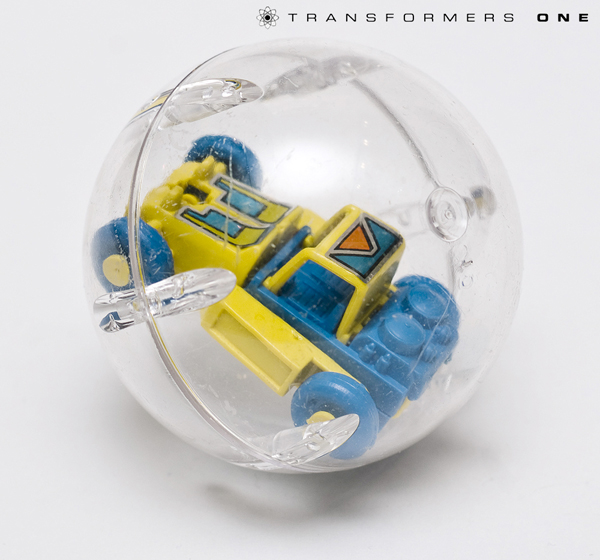
A beautiful contrast of yellow and light blue, this thing really does stand out. Immediate differences to a Transformers Beachcomber are the stickers on the hood and also on the roof. It HAS a roof, not just a rollcage. The wheels are 100% moulded and therefore there are no rubber tyres. The headlight location and moulding is completely different too, with them being part of the knees as opposed to being connected where the wheels meet the hood. Also, there is no grill pattern on the sidepods/outer arms, that surface is complete smooth and lacks detail.
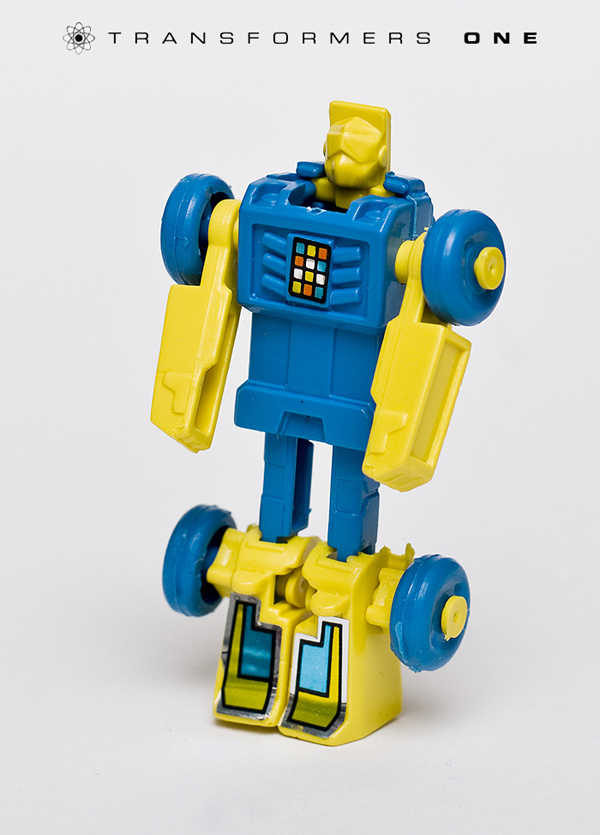
Robot mode is even more special than the vehicle mode as the yellow comes into its own. You can see the foil finish on the leg stickers, the unique chest sticker, lack of paint apps on the face, the lack of moulding detail on the forearms and abdomen compared to a regular Hasbro Beachcomber. Bits of plastic flash are evident here and there too.
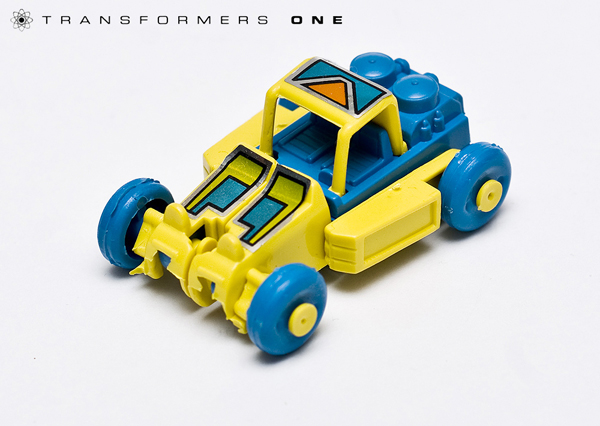
The question remains, is this a vintage KO or a more recent one? It being available at a form of "retail" and being of such different moulding to the original would suggest a more recent origin. Also, the colour scheme is very reminiscent of the 2005/2006 Mild Seven Renault Formula 1 team where Spanish superstar driver Fernando Alonso won the world championship in those years, resulting in Spain having some of the highest F1 viewing figures in the world in that period and ever since. Alonso and Renault were massive in Spain during 2005/6. We saw many Renault F1 bootleg toys during that holiday.
Things would become clearer in 2014.
~ Part 2 - The Discovery ~
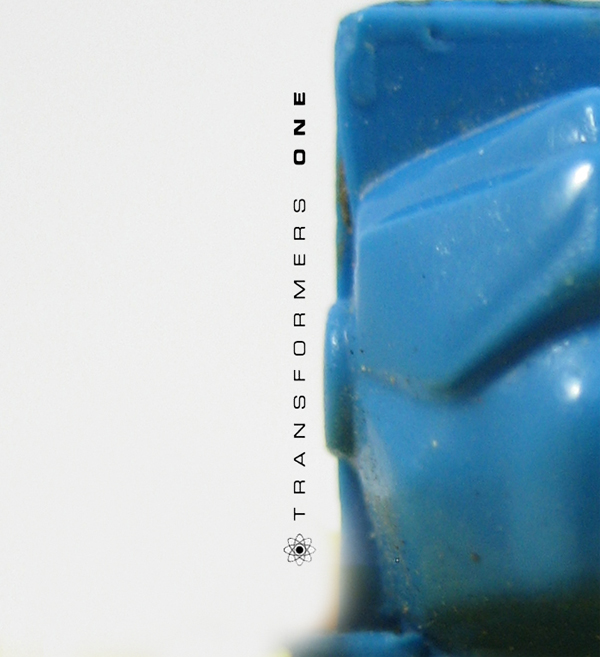
Years passed, seven and a half to be precise, and the memory of the Mallorcan find faded into history. Nothing more was discovered regarding the gumball Beachcomber, no more were ever seen by those I knew and it never made the headlines. In early 2014, though, I believed I had finally found another of those Spanish gumball Beachcombers, an opportunity to make up for not being the one to spot the original find in Mallorca, an opportunity for a proper souvenir from that holiday.
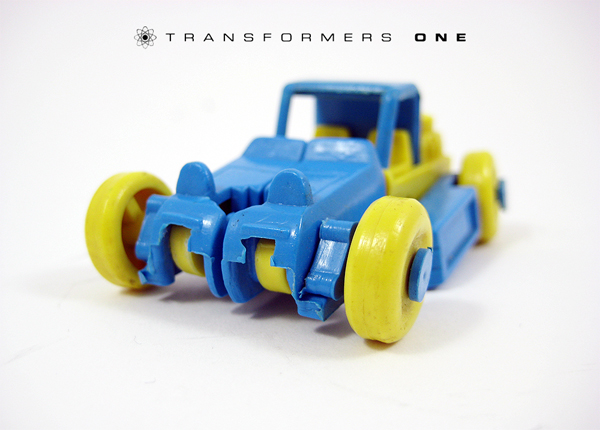
Having secured my own bootleg Spanish 'gumball' yellow and blue Beachcomber, I was once again able to feel proud of my own resourcefulness, detective skills and - at the same time - lament all the many interesting things I had sold from my collection over the years that had I kept together, would have amounted to a monumental collection of oddities, variants and one-offs about which I could be truly proud. Alas, they are all gone, and I have always said that I am not a minibot collector (can you imagine the turmoil of a minibot completist now having to chase these KOs?), so I decided to sell this KO Beachcomber too.
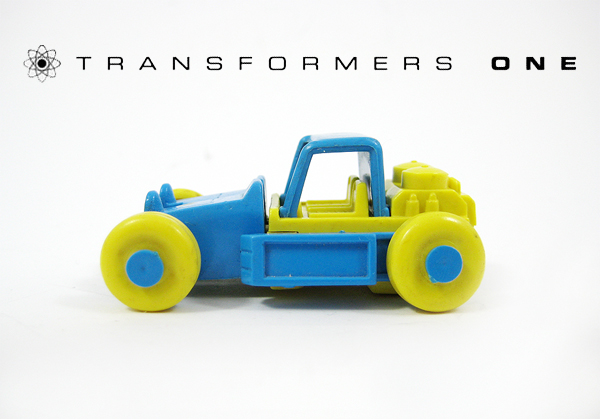
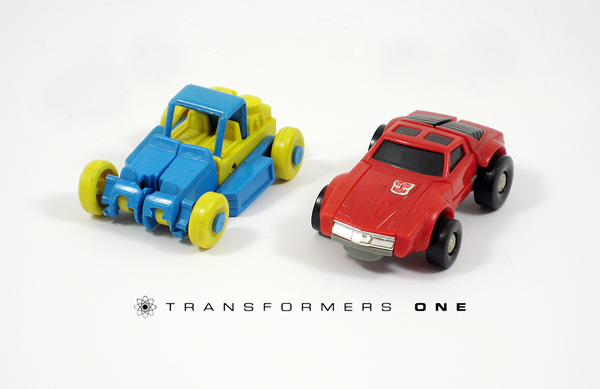
Yes, it has sentimental value. Yes, it was a symbol of how I could compete with any of the variant collectors out there despite my limited budget, but I had new priorities, and sacrifice is the name of the game these days. Document and move along, that's the philosophy now. Even though it didn't have any of the unique stickers or the gumball packaging, it was still worth a great deal to a minibot collector, as we can see from the above size comparison, it fits in perfectly with existing official Transformers/pre-Transformers minibots.
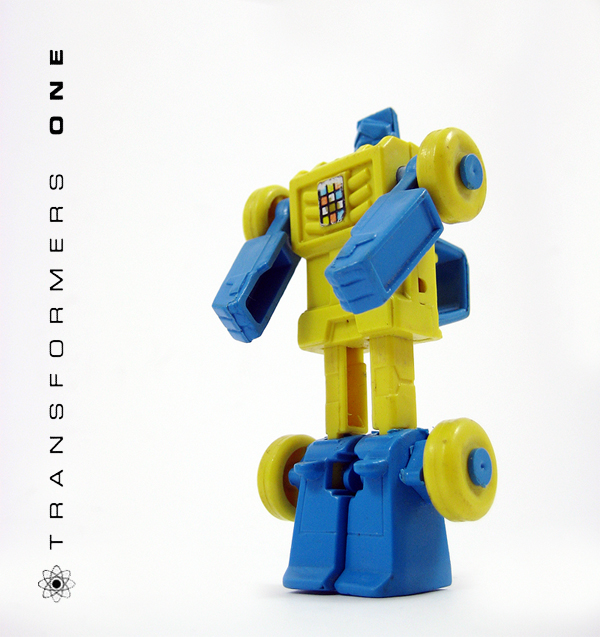
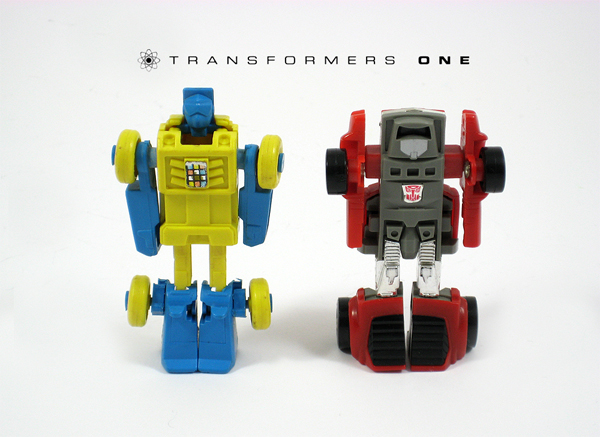
Throughout this whole experience, something about this second Spanish KO Beachcomber seemed a little less impressive than Ras's one, and it wasn't just the lack of stickers, pristine minty-ness or gumball packaging. It seemed far too close to a regular Beachcomber, but I dismissed it as a general waning of interest and investment by me emotionally in vintage toy collecting. It wasn't until I had sold it, and started editing my pictures for an article, that I realised what I had just bought and sold. Ras kindly allowed me the use of his pictures so I could show the item as it came originally, packaged and stickered. When comparing our robot mode pictures side by side so that I could pick the best one, the penny (or 1 Euro coin) finally dropped.
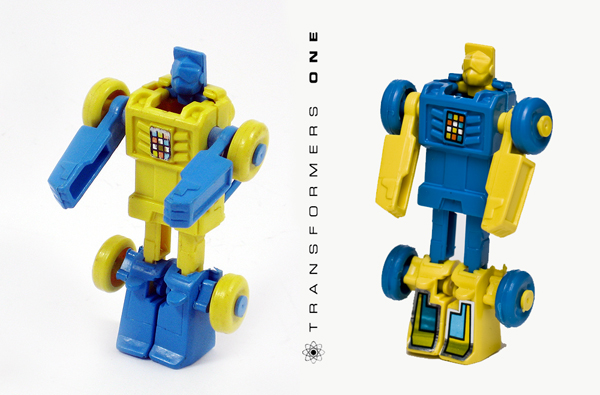
They were different, the inverse of each other. I promptly got back in touch with the seller of this second KO Spanish Beachcomber, the blue/yellow one (not to be confused any more with the yellow/blue one). That's when the real discovery was made.
~ Part 3 - The Floodgates ~
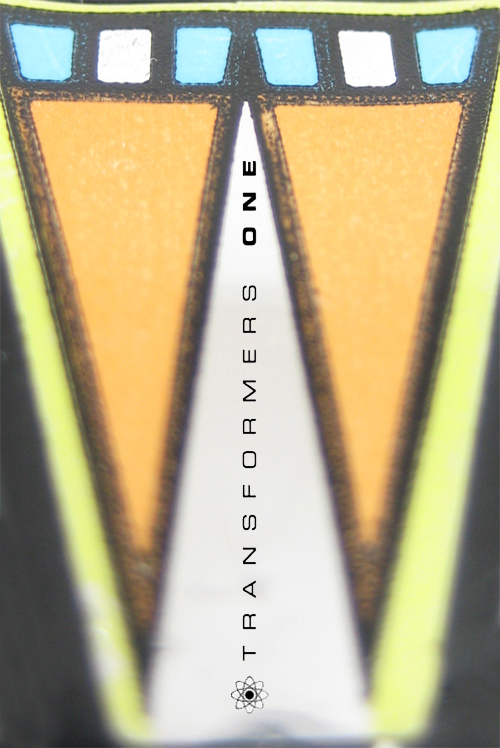
So I'd discovered that the blue and yellow KO Beachcomber I'd bought and sold from the Spanish seller was in fact the exact inverse of Ras's yellow and blue KO Beachcomber from the Mallorcan gumball. This newer variant came from Extremadura and was apparently found in a street market. Clearly, it was not a one-off bootleg and multiple variants were suddenly a possibility. I just didn't realise how many variants.
Having asked the seller of my Beachcomber KO if he could get me any more, or if he knew anything about the extent of the line, the next bombshell dropped. He had four more bootleg Spanish minibots, and he'd had them since childhood. That meant that these items were not as recent as we believed, they were in fact vintage bootlegs, and not exclusive to Mallorca. And then he offered to send me pictures:
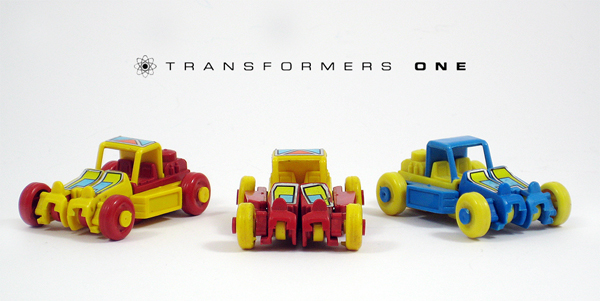

Not only were the Beachcomber bootlegs from Spain available in blue and yellow, but also in red and yellow. Once again, inverse variants existed, but the stickers on the roof and legs were the same across all 4 Beachcomber KO variants. The fact that they were from the seller's childhood, so late 1980s/early 1990s meant the whole Formula 1 Renault/Alonso influence was out the window.
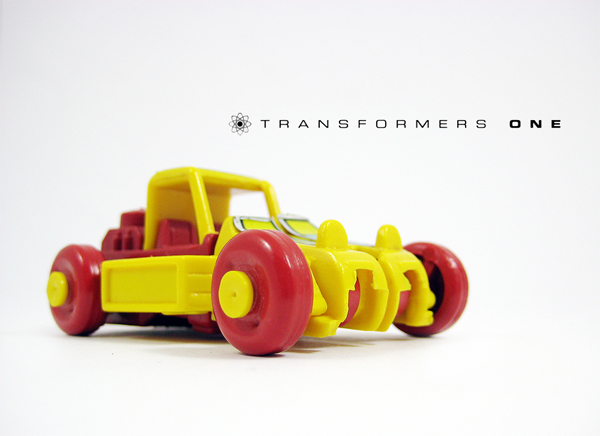
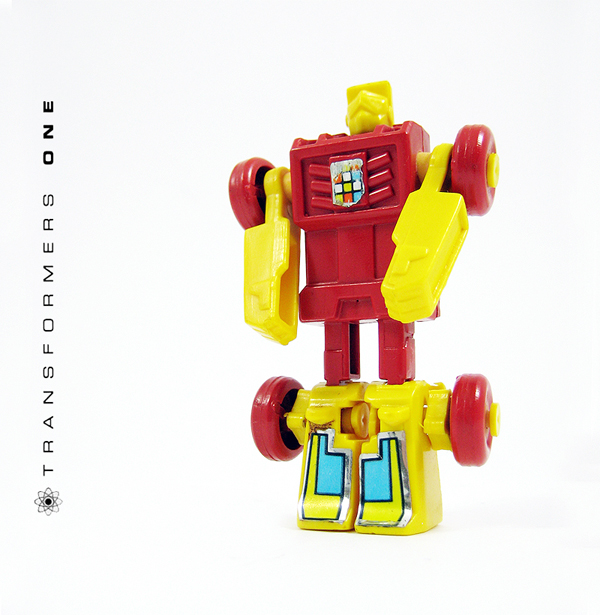
It's more likely that the red and yellow schemes referenced Spanish national flag colours and the blue and yellow one of the regional Spanish flags (Asturias or Canary Islands). Or you know, these colour schemes were picked simply because they looked nice. Pablo, the seller, told me that these minibots were bought circa 1990 and that they were available in small shops and drug stores.
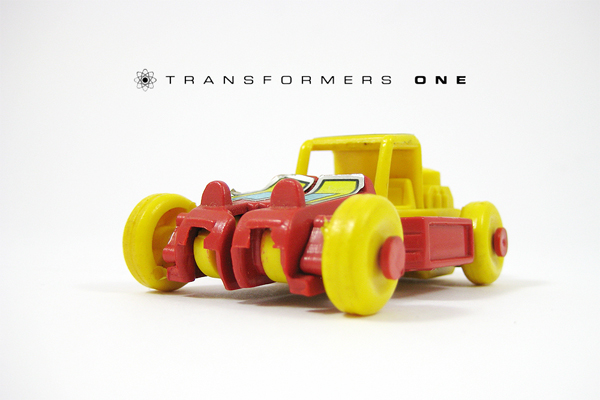
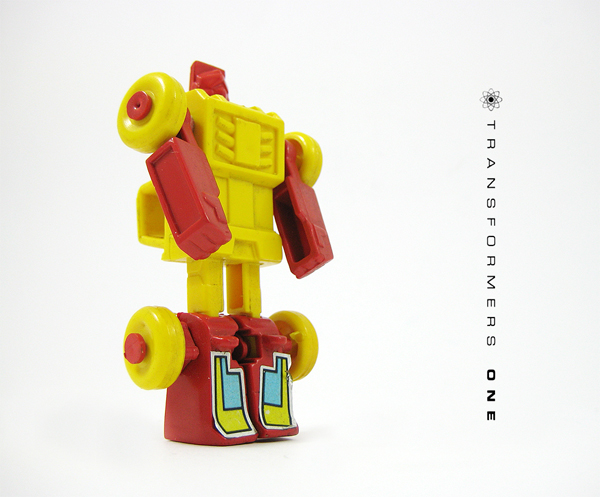
Pablo also mentioned that the toys were sold basically loose without any sort of card or box artwork or overarching design aesthetic to the packaging. Once he gave me the name of the company responsible for selling these toys in Spain, the floodgates well and truly opened, it was quite literally a key that unlocked a chest of treasures.
I did say that Pablo mentioned he had four minibots, didn't I?
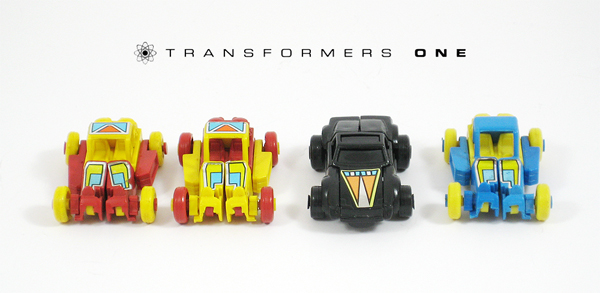
Four minibots, five variants altogether uncovered, and the most important detail - not all of them were Beachcombers. The images I was sent included another blue and yellow Beachcomber, the two red and yellow Beachcomber variants seen above, and remarkably, an all-black Windcharger KO with unique stickers too. If there were at least 4 Beachcomber colour schemes, goodness only knew what was waiting to be uncovered for the bootleg Spanish Windcharger mould.
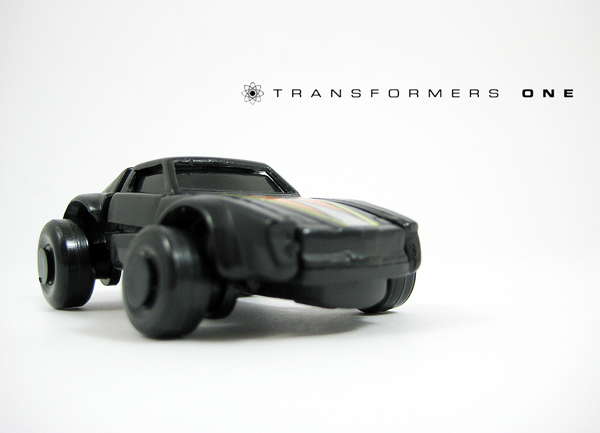
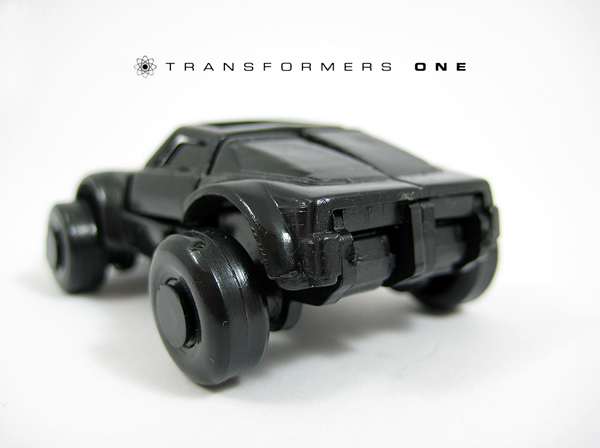
It doesn't take much to conclude that this all black colour scheme on Windcharger is meant to invoke images of K.I.T.T from Knight Rider, especially in light of these bootleg minibots being revealed as vintage-era products and not from 2006 as originally assumed. This black Windcharger is completely devoid of chrome, paint application or metal. It also features much less moulding detail than a Hasbro or Takara Windcharger, notice the lack of vents on the rear windows and the one-piece sunroof. There's no separate grille piece either, it's all integrated.

Words cannot express how brilliant this looks absolutely all in black, I had the feeling I was handling something really very special. I realise there are other black Windchargers out there, the most commonly known being the black Japanese version of the keychain, but that's got the chrome and face paint, so while its slightly better quality and finish is a factor, I dislike the fact that its rarity is a contrivance. Any modern product that is manufactured in numbers designed to make it scarce and expensive doesn't interest me as much as a bizarre vintage obscurity from somewhere not often associated with interesting variations, whose rarity is a result of history, whose desirability now stands in stark contrast to its image as a cheap knock-off when it was first released.
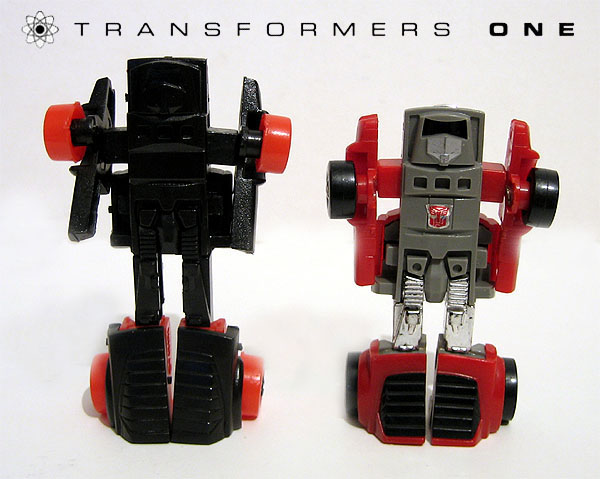
The other nearly-all black Windcharger of note is the black/red model kit from Takara/Seven co-released with the Brawn model kit that is heavily based on a Bumblebee (more HERE). You can see from the above picture that it's significantly taller in robot mode (and longer in car mode) than a normal Windcharger, as well as having red highlights. That brings us back to Señor K.I.T.T-charger:
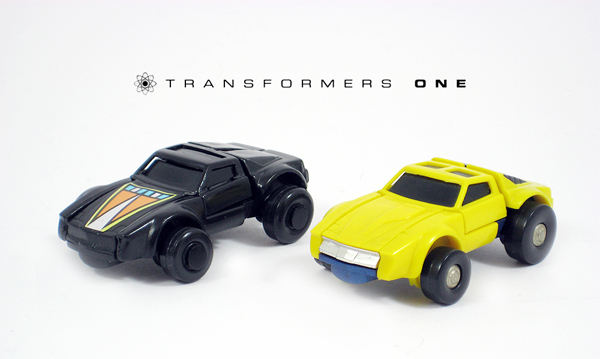

Not only is the Spanish KO black Windcharger the only one of the three to really be all-black (for better or worse, depending on your preference), but it also does not have an unsightly keychain loop on its head and it's the same size as the official G1 Windcharger mould. I will admit I am a huge fan of the completely unadorned shadowy black look on him, and therefore the missing factory stickers on his chest and rear windows (you'll see those soon) are not missed.
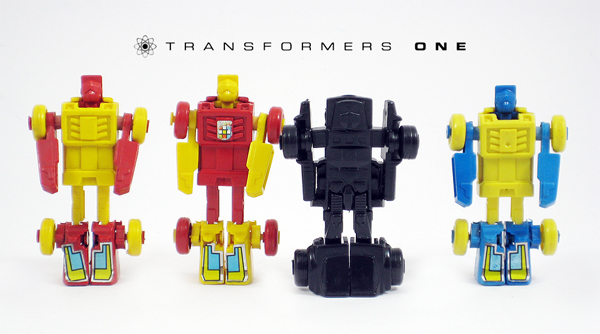
Obviously I wasn't able to leave it at that, I had to know more. I asked if Pablo knew the name of the company responsible for making these bootlegs, or if he could shed any light on just how many variants he remembered. He said:
"In the same collection exists a mini hovercraft."
I hear pennies dropping again.
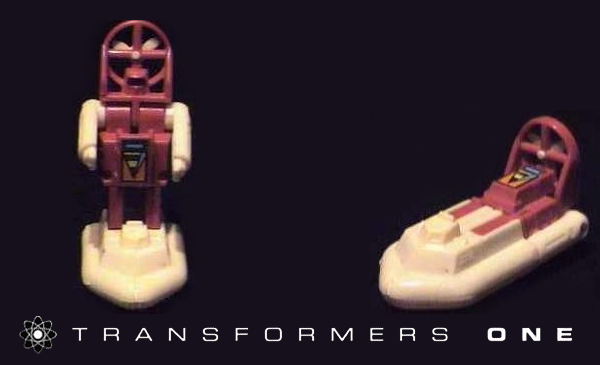
~ Part 4 - Joining The Dots ~
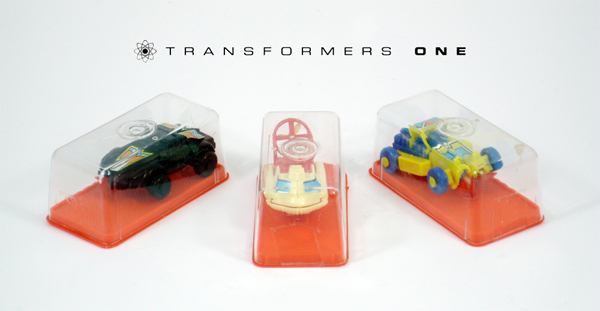
The gumball yellow and blue Spanish KO Beachcomber may have been first discovered by non-Spanish Transformers collectors 7 years previous, but over 10 years ago there was a different minibot bootleg mystery that was not resolved to our satisfaction. Dutch collector Argus had and sold a KO cream and brown (or so it appeared) Seaspray which was significantly remoulded, and at the time - and until recently for those outside Spain - its origin was never traced back to any range of toys or family of bootlegs.
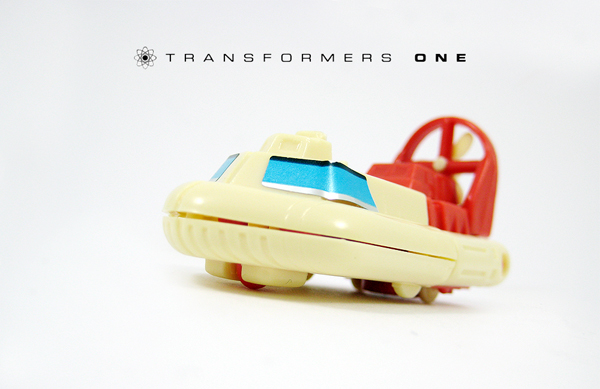
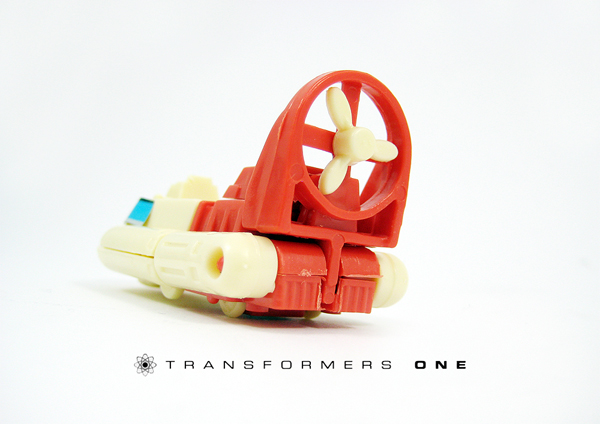
Thanks to Pablo's message and after just the tiniest amount of investigation, it became abundantly clear that there were indeed three distinct moulds in the Spanish KO minibot range. It's amazing what the correct terms and words can direct you to on a simple Google search. In addition to Beachcomber and Windcharger, both subtly remoulded, the third was Seaspray and he had the biggest change of all. His double-fan rear arrangement was changed to a much larger single central fan configuration.
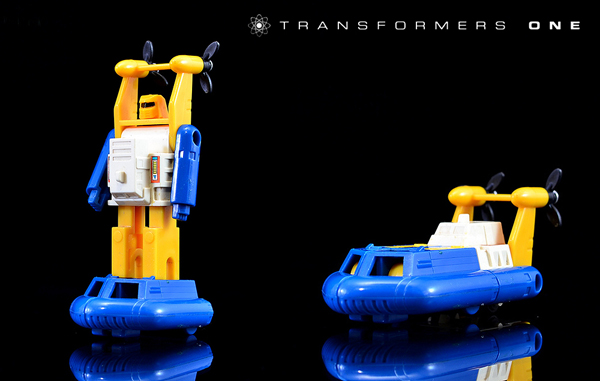
Seaspray may not be the most popular of the G1 minibots, but he has his passionate fans! Also, the degree to which the Spanish KO Seaspray has been recoloured and remoulded means that any serious variant lover will find it fascinating and worthy of investigation. I don't know if it was because it surfaced during a period of time where the different possibilities for variants were more limited than now where collectors are aware of a multitude of South American origins for odd minibots, but the KO Seaspray always seemed quite close to home. To discover its origin, and see it be so closely tied to that of another KO minibot mystery of recent times definitely evokes a feeling of connecting the dots.
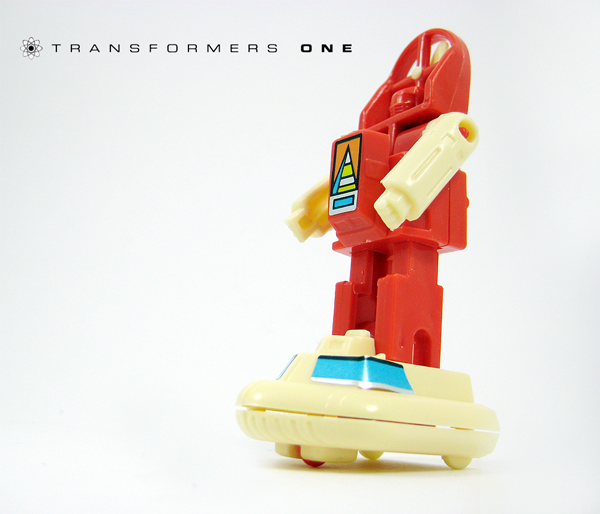
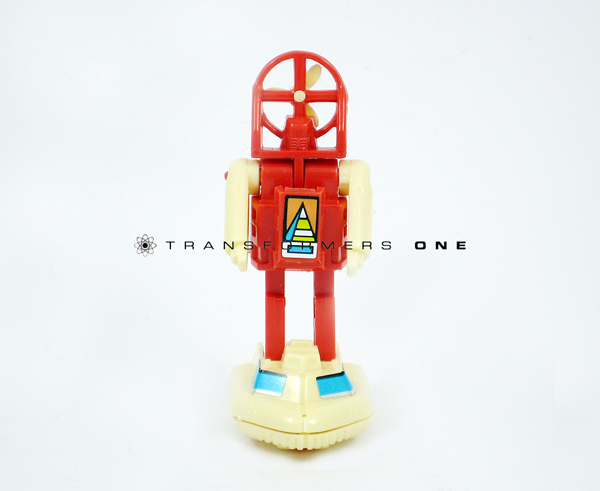
The Spanish Seaspray has unique stickers, just as the Windcharger and Beachcomber variants do. There are window stickers where the G1 Takara/Hasbro Seaspray has holes moulded into the front of the hovercraft. There is no paint application on the KO Seaspray, just moulded plastic in two colours, so it's very hard to make out facial details at any sort of distance as it's a one-piece sculpt. Also, due to the nature of the huge circular fan, there is a central hinge just below KO Seaspray's neck where the rear section pivots instead of at the shoulders like the G1 toy. This figure is certainly remoulded and recoloured enough to be considered a separate character by those that way inclined.
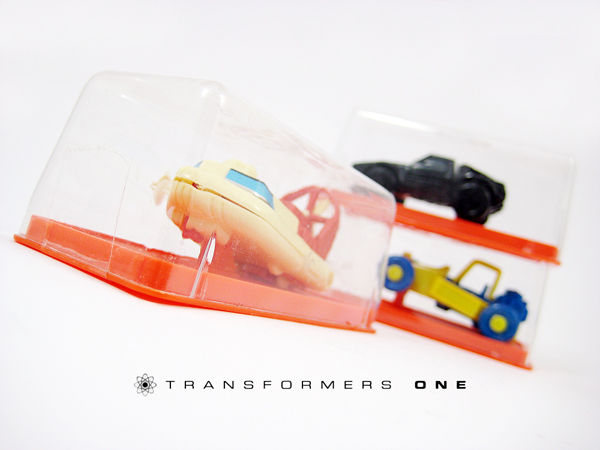
You might have noticed the KO Seaspray, Windcharger and Beachcomber at the head of this article being displayed in small die cast car-style clear cases, and you can even see there is a small peg in the base for connecting those die cast cars securely. These minibot KOs have no compatibility with that base, but this is how they were originally sold in the drug stores and small shops for 100 pesetas approximately in the mid-to-late 80s and early 90s, and then of course repackaged into a gumball in the case of the first yellow and blue Beachcomber.
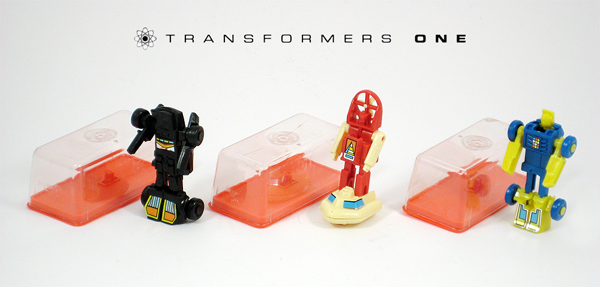
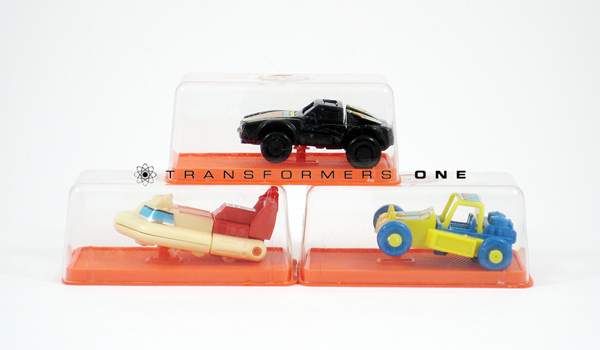
These three packaged Spanish KO minibots were also found in Mallorca, interestingly, but clearly sold in a store as opposed to a gumball machine. The company responsible for them had been releasing small die-cast model cars and vehicles for years in the same kind of packaging, so these Transformers bootlegs were shoe-horned into already-existing display cases used by the company for their other products. Speaking of the company responsible, I believe I promised you all a name.
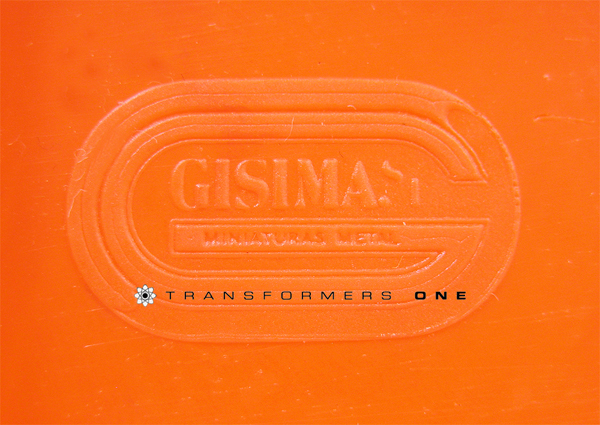
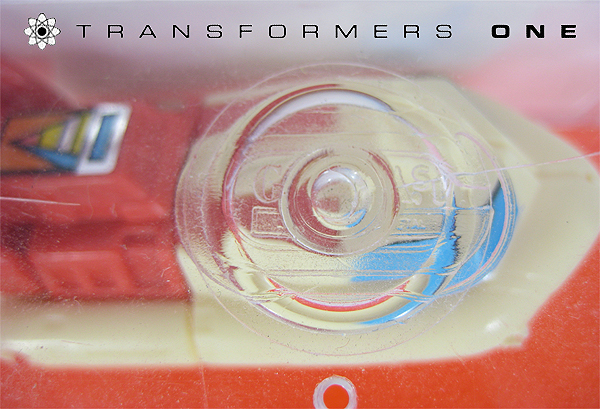
That logo is visible on the bottom of the orange display base and is also moulded into the top of the clear plastic cover. At this point, two very interesting bootleg G1 Transformers minibots that I'd known about for years and had seen only one example of had been united under a single banner, and further variants of those moulds found, together with a third figure discovered. Their origin had been right there under our noses for years, the knowledge very firmly established in Spanish Transformers collecting circles - as was the case with Finnish Diaclones and the infamous Black Diaclone Tracks. It's getting that information out of its native country and spread to the community as a whole that takes time, lucky finds and then contacts within the native fan base to establish the full extent of what was available.
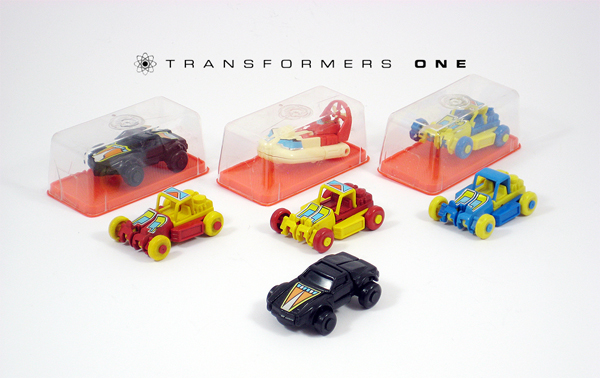
~ Part 5 - Gisima ~
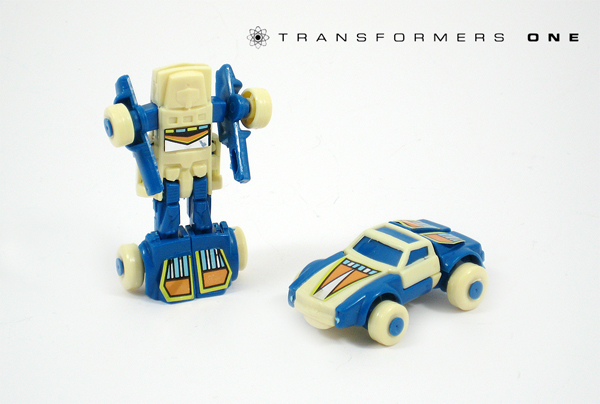
Armed with the company name "Gisima S.L." and the original information provided by Pablo, it became much easier to track down information on the company responsible for manufacturing and selling the Spanish bootleg minibots. Websites led to blogs, which in turn led to forums and eventually the scope of these releases - and the number of available variants - became clear. Painfully clear.
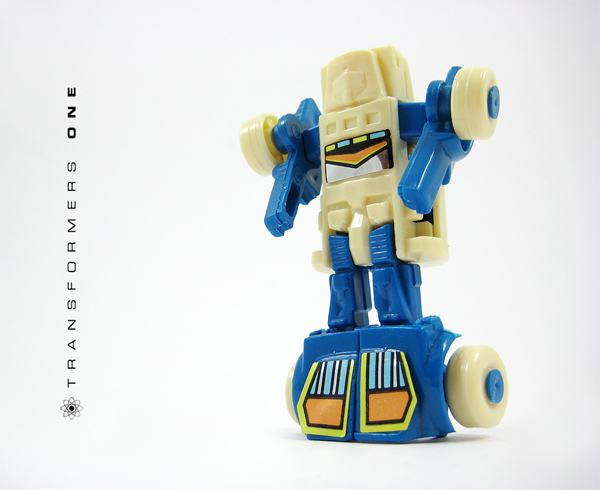
To quote from the excellent Toys From The Past blog run by Juan Angel Serrano:
"Gisima is a Spanish toy manufacturer based in Ibi (Alicante). The company was founded in the year 1978 by Miguel Juan Gimeno, Emilio Mollá Silvestre, Plácido Martos and a brother of him. The name of the company was taken from the first syllable of each surname: GImeno – SIlvestre – MArtos.
"The company manufactured toys from the very beginning, it was not one of those companies whose production derived from plastics or metal to toys, but a toy company from 1978 on...Something that I find particularly nice, is that the company still exists. In 1998, the name GISIMA was changed to Game Movil S.L.".
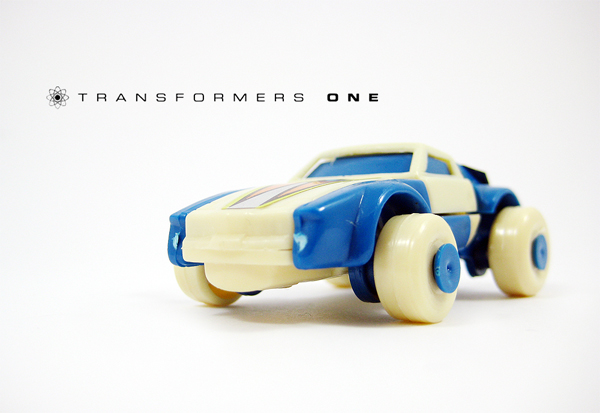

It was clearly evident that within Spanish circles, the story was quite well known and these toys existed in the collections of toy enthusiasts, not Transformers enthusiasts exclusively, and everyone had a particular piece of the puzzle. I was seeing the same toys I had uncovered already though; the Beachcomber KOs, the black Windcharger and the Seaspray. Then I came across a particular collector whose acquisitions and displays contained a significantly larger part of the puzzle than most:
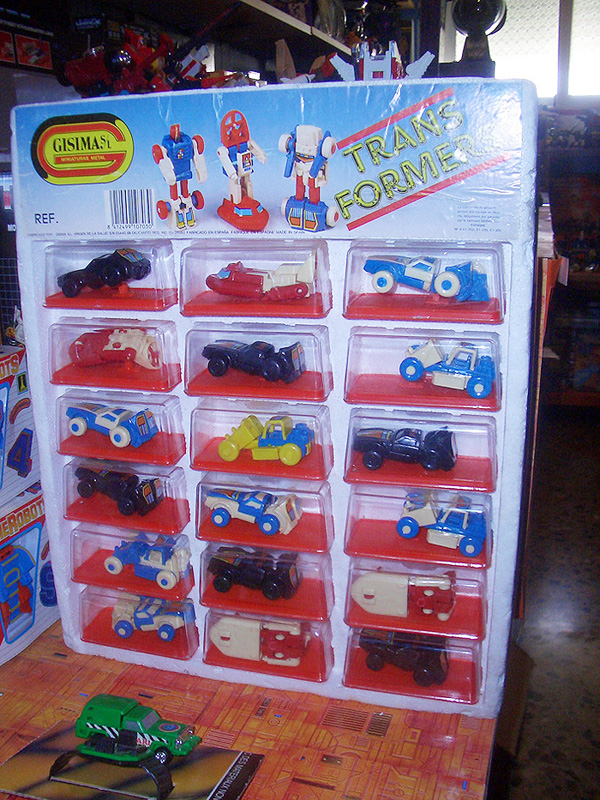
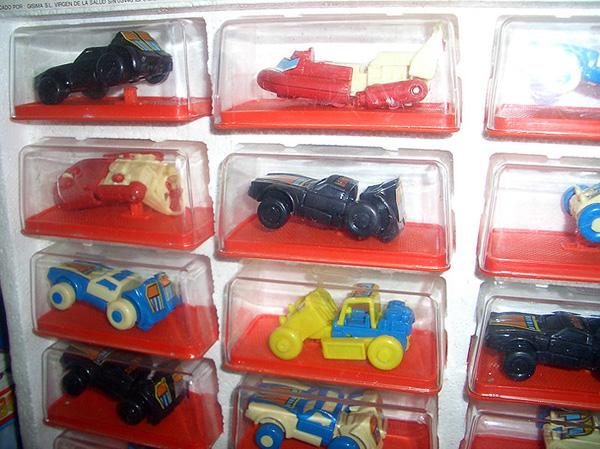
This simply incredible Gisima KO minibot store display is the photographic and physical property of Nuevadominion/Cybertron member "Scorponok". I do so wish I had been able to establish contact with him and ask for more photos, information and a price! Alas, I did not ever hear back from him so I hope he will not be too dismayed to see his photos in use here for informational purposes, I have tried to credit fully and will adjust accordingly upon hearing from him in the future of course.
Marketed as "Trans Formers" and showing only Beachcomber, Seaspray and Windcharger, the full extent of the different colour combinations and the task of any self-styled minibot completist are nothing short of daunting. The variety of colours evident across the eighteen KO minibots in that store display alone means that any combination of parts was possible during assembly. If we look at the yellow and blue Beachcomber in the centre of the display, it has yellow legs and feet whereas the previous two showcased here had alternating/inverse colours, so hybrids are a real possibility.

Seeing that every KO minibot seems to have a direct inverse variant, and hybrids too, trying to come up with a complete listing becomes virtually impossible. One can only list the extremes of each colour scheme and leave it to the collector to fill in the gaps for what else was possible and released. Within the above store display we can see the all black Windcharger, the red and cream Seaspray and its inverse, a yellow and blue Beachcomber not quite the same as the two photographed previously, cream and blue Windchargers and cream and blue Beachcombers. This means the Beachcomber had red/yellow schemes, blue/yellow schemes and then cream/blue schemes.

It's only when you realise that virtually every single part of one of these minibots is subject to variation that you spot the smaller details. For example, I never realised that the red and yellow Beachcombers I have are not 100% the inverse of each other, they both have yellow roofs. Now if you look at the blue and yellow ones in the above picture, they are completely inverse in every respect, wheels, wheel hubs, roofs, feet, legs, head, arms and torso.
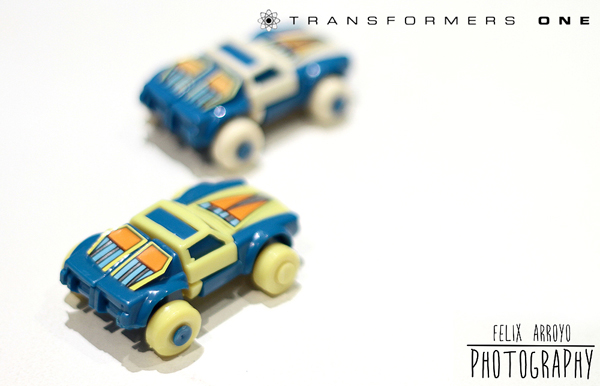
There is a distinction between the cream and yellow plastic used on the Windcharger KO mould too, just like the Beachcomber. So each is available in blue/yellow, yellow blue, then cream/blue and blue/cream. Just to show that there are points in-between those inverse extremes, look closely at Felix Arroyo's yellow/blue Gisima Windcharger above. It's almost a perfect duplicate of the cream/blue Windcharger shown in previous pictures and in the same picture, except the front wheel hubs on the yellow/blue Windcharger above are yellow like the rest of the wheel, not blue like the rear hubs. For the sake of sanity, collectors are probably going to have to stick to the main inverse variant types and just accept whatever little irregularity in assembly comes their way.
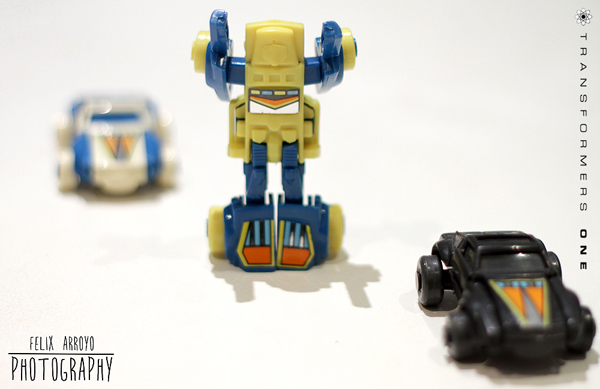
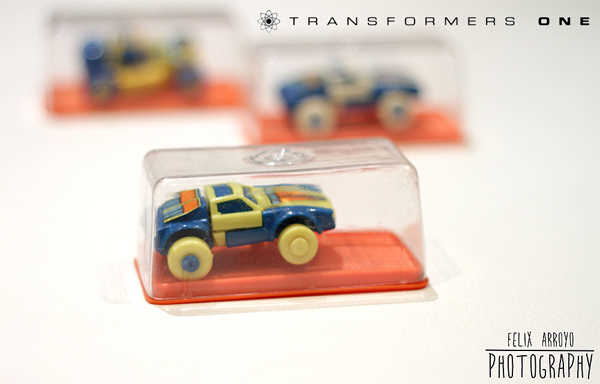
I think when I am referring to these variants, in order to avoid confusion (hah!) I'll label the head/torso colour of the Windcharger mould as its primary colour, so the Windcharger featured immediately above will be the yellow/blue version as its robot head is yellow. The Beachcombers also could be classified by head colour, so the very first gumball Beachcomber KO found by Ras would be a yellow/blue, saying yellow first and primarily as that's the colour of his robot head and most prominent in vehicle mode. For Seaspray too, the head/torso colour of the figure should act as the primary colour of the variant.

So in the picture above, from left to right we'd have to classify them as yellow/red Beachcomber, red/yellow Beachcomber, cream/blue Windcharger, red/cream Seaspray, black Windcharger, blue/yellow Beachcomber and yellow/blue Beachcomber. Having spoken to Spanish collectors, people who used to own one of these Gisima items and from responses on the Spanish forum sites, there are some variants that people have owned/seen but there are no photographs of them today, such as an all cream Windcharger (presumably the inverse of the all black one). Conceivably, all of them have a variant where assembly involved monochromatic parts, so an all yellow Beachcomber or an all red Seaspray.

Assuming, though, that the all black and all cream Windchargers were deliberately monochromatic where other solid-colour "errors" on the toys are assembly irregularities where there were some guidelines as to what the main colours for each release should be, we can put together a provisional list of variants. Looking at the toys, it also appears that no more than 2 colours of plastic were used per figure, so the red/cream/blue toys shown in the stock photography on the store display may be just that, stock images and not actual released toys.
All that in mind, we potentially have the following main variants with confirmed ones accompanied by the owner/photographer's name in brackets:
Beachcomber
- Red/Yellow (Maz)
- Yellow/Red (Maz)
- Blue/Yellow (Maz)
- Yellow/Blue (Maz)
- Blue/Cream (Scorponok)
- Cream/Blue (Scorponok)
Windcharger
- Black (Maz)
- Cream - assumed
- Cream/Blue (Maz)
- Blue/Cream (Scorponok)
- Yellow/Blue (Felix)
- Blue/Yellow - assumed
Seaspray
- Red/Cream (Maz)
- Cream/Red (Scorponok)
- Burgundy/Cream (Argus)
- Cream/Burgundy - assumed
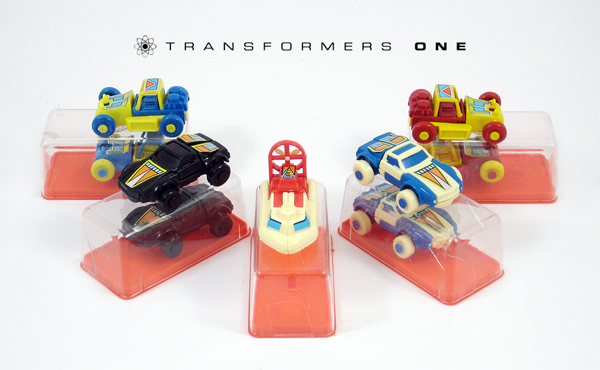
That's thirteen confirmed variants, sixteen with the assumed inverse versions, and eighteen if you assume 3 main colour sets for each mould. Once you start counting the hybrids with Beachcomber roof colours, wheel hubs, legs and Windcharger wheel hubs to name the ones I've seen, the number goes well above a possible 20. Then there's the ones I haven't seen, Felix mentioned a red and white Windcharger, and the store display does show red parts on Windcharger too.
These bootleg minibots from Gisima, released in Spain during the height of vintage global Transformers popularity, will probably never be considered by collectors as on a par with South American minibots from Brazil or Peru because Gisima's re-moulds are not official and were not sold on Transformers cards, or something derivative but still licensed. They will always be knockoffs, but the sheer range of those available, the interesting interpretation of the original moulds and the bizarre colours on minis - all in the right scale to sit beside official TF minibots and do it well - means that completists will be forced to stand up and pay attention. Finds like this, where an entire range of G1-based toys - popular ones - exist in undiscovered colour schemes and extent outside their own country will simply stop one day, so it's important to enjoy them when they come along. We're running out of countries!
Quite a long way from a knockoff Beachcomber found in a gumball machine on holiday, right?

Huge thanks to Pablo, Juan Angel Serrano, Felix Arroyo, Ras and Bryce Rutledge. An unreserved apology also to Scorponok of Nuevadomain/Cybertron for using pictures without express permission, I'm at your mercy should you wish them removed once you see my request.
The individual Square One blog chapters that made up this article can be found starting HERE
All the best
Maz@tf-1.com